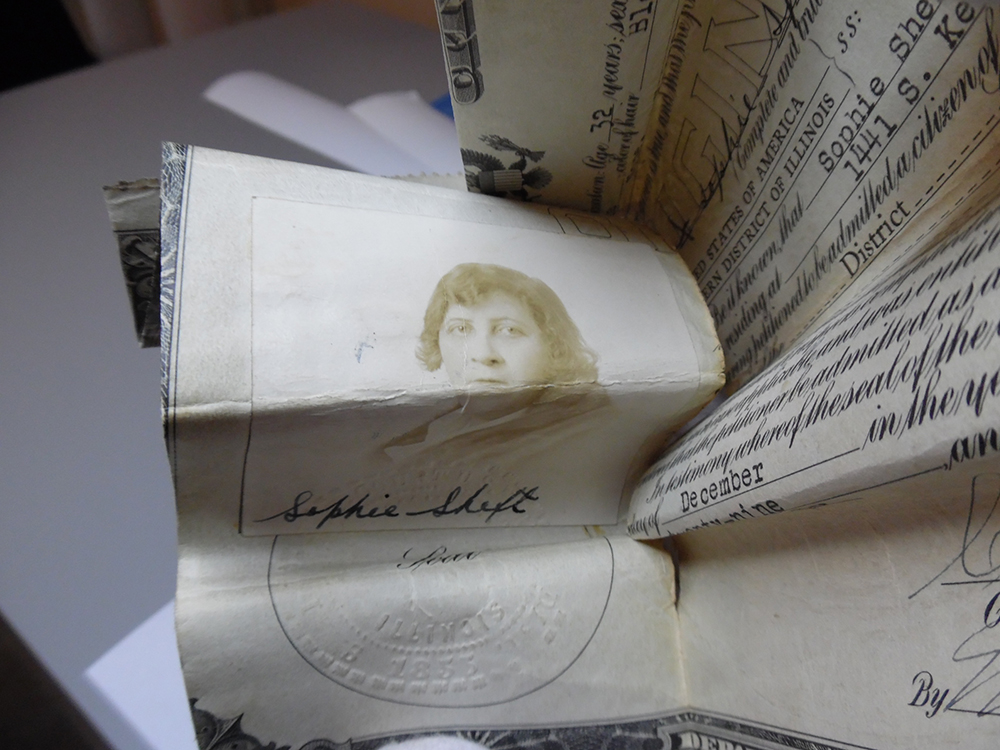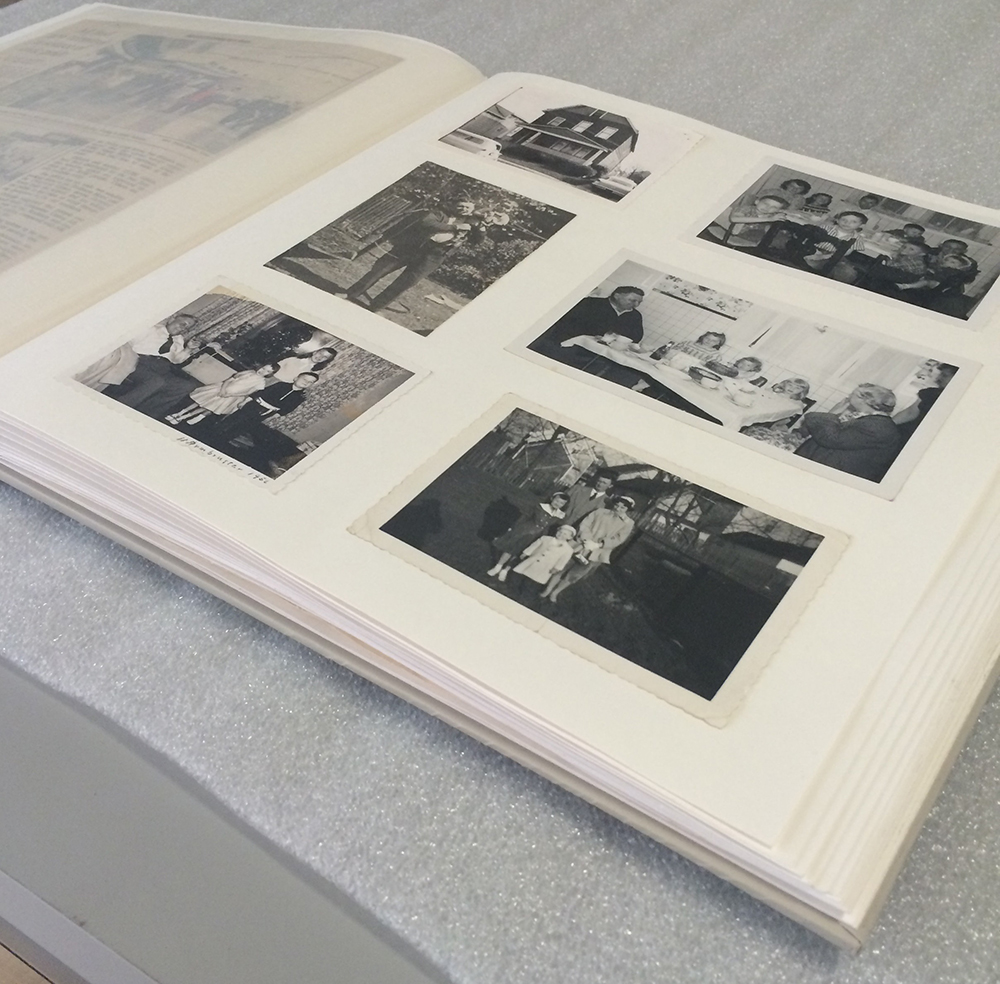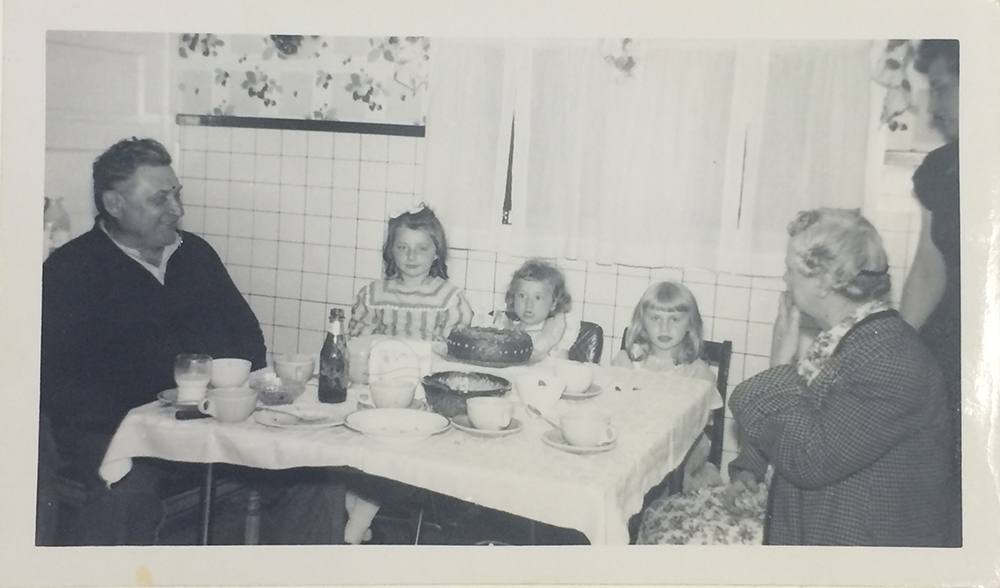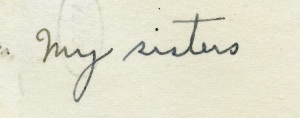Caring For Black and White Photographs
Throughout the past year, the Museum Conservation Center has addressed a variety of conservation concerns through workshops and specialized care. We help people understand the necessity of keeping the items that tell their family’s story in a manner that suits their irreplaceable value.

One fellow visited the Conservation Center with a rolled tube of leather, and upon a closer examination, we could see that the certificates of naturalization that had been carried by his grandfather and sewn into this little leather carrier were absolutely in bits. I was able to unroll one of the certificates enough to see that a black and white photograph was attached to and identified as his grandmother, Sophie. It was the first time he had seen a picture of her as a young woman.
Sometimes items come in for assessment to us that have been, well, a little too loved.
The other day, a woman came in to the Museum Conservation Center to get our opinion of what she might do with her mother’s decorative marriage certificate. We decided it would be best preserved in a presentation folder, which will allow her to store it flat, away from light, and in a paper material that includes a buffering agent to help prevent further acidic deterioration.
Following that, she brought out an album (a very nicely bound archival album with acid free paper and interleaving pages) and asked about a more ‘delicate’ matter. In compiling the album, she had used an archival glue and pasted down each photograph – not just in the corners or in small areas, but over every inch! Her dilemma was that the only photos she had of her grandfather were now pasted down completely onto the pages and she could not remove the photos in order to make copies for family. She was trying to do the right thing and in fact, she knows I am writing this and wants you to know what she learned so that you won’t have the same problem.


We recommend the use of photo corners within an archival album so that photos can be removed more easily if necessary. They come in a variety of types and sizes, are made of acid free material, and use an adhesive that will not contribute to deterioration. We have some samples on display at the Museum Conservation Center if you want to come by and find out which would work best for your project
There are many ways to frame a photograph for wall display, too. Light damage or fading, especially if it’s a modern color print, is one problem that causes the most grief. Keep originals stored safely and frame a ‘display only’ copy of your most important color photos. Adding a mat to separate the photo from the back of the glass can prevent the photo from adhering to the glass, as this condition often leads to loss of the image.

In addition to preserving the physical photographs, it’s also important to retain the content of these primary documents. It’s great to find information about the person in the picture written on the back of a photograph that includes a date, if known, and full name (e.g. Priscilla and Mary Jane Oates vs. “my sisters”) of those pictured. Often, a photograph becomes orphaned when this information is lost to one generation and the next generation is unable to fill in the blanks. Another note on this is to please do your identification with a soft pencil (2B is okay, but 6B is better!) on the back margin area. Ballpoint ink or markers can transfer their ink through the front of the photo. When marking the photo, remember that print is more legible than cursive handwriting.
Take care; we will!
Barbara Conner is the conservation services manager at the Senator John Heinz History Center’s Museum Conservation Center.